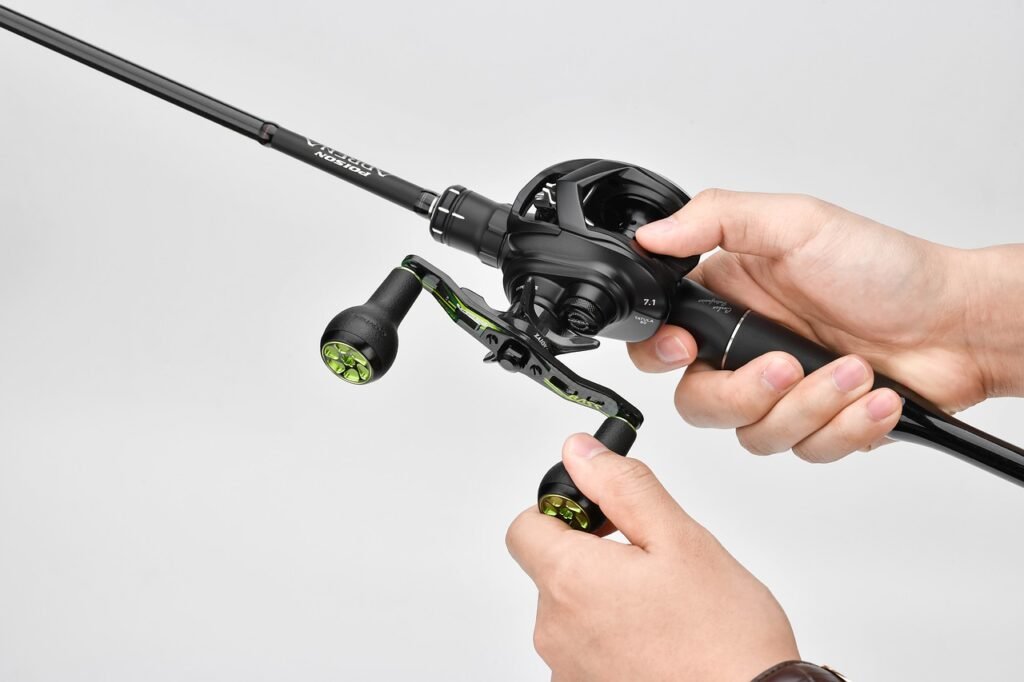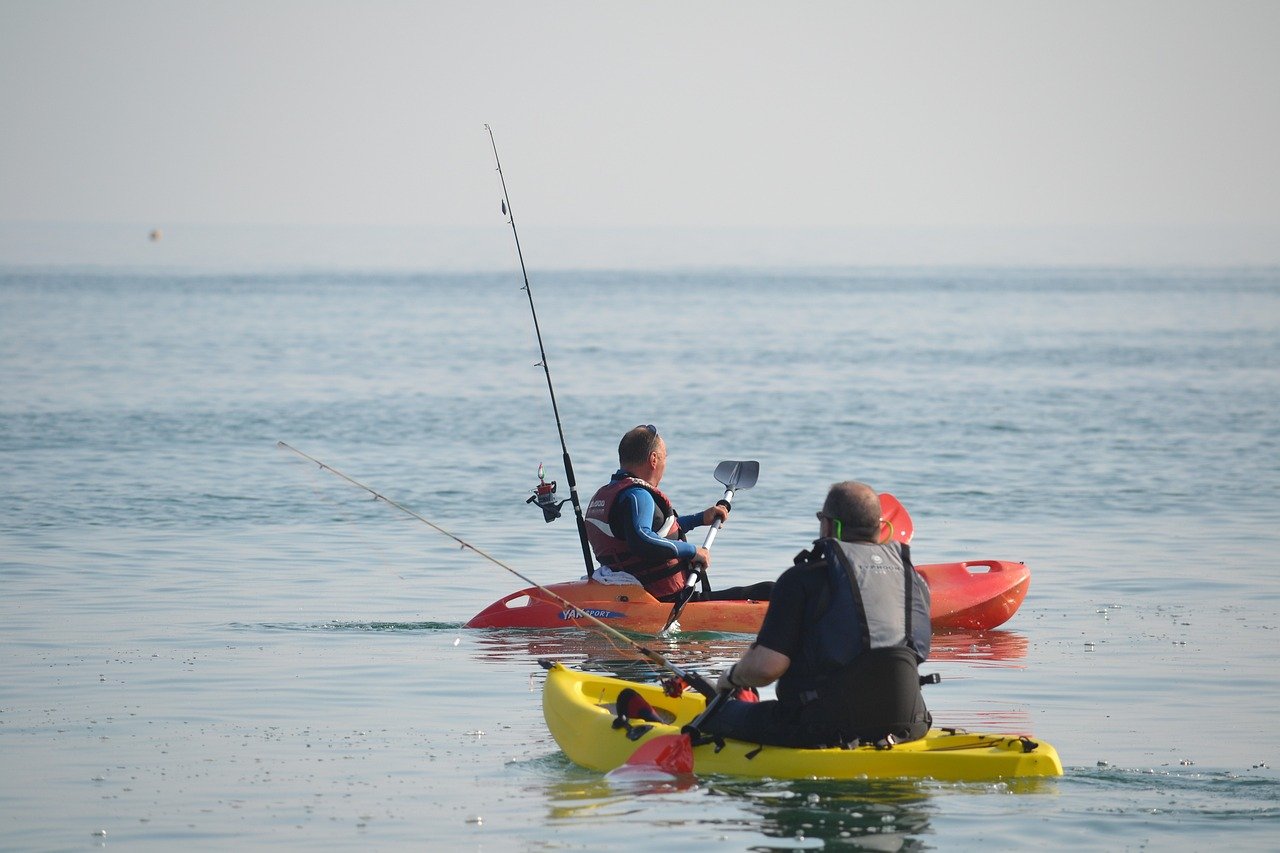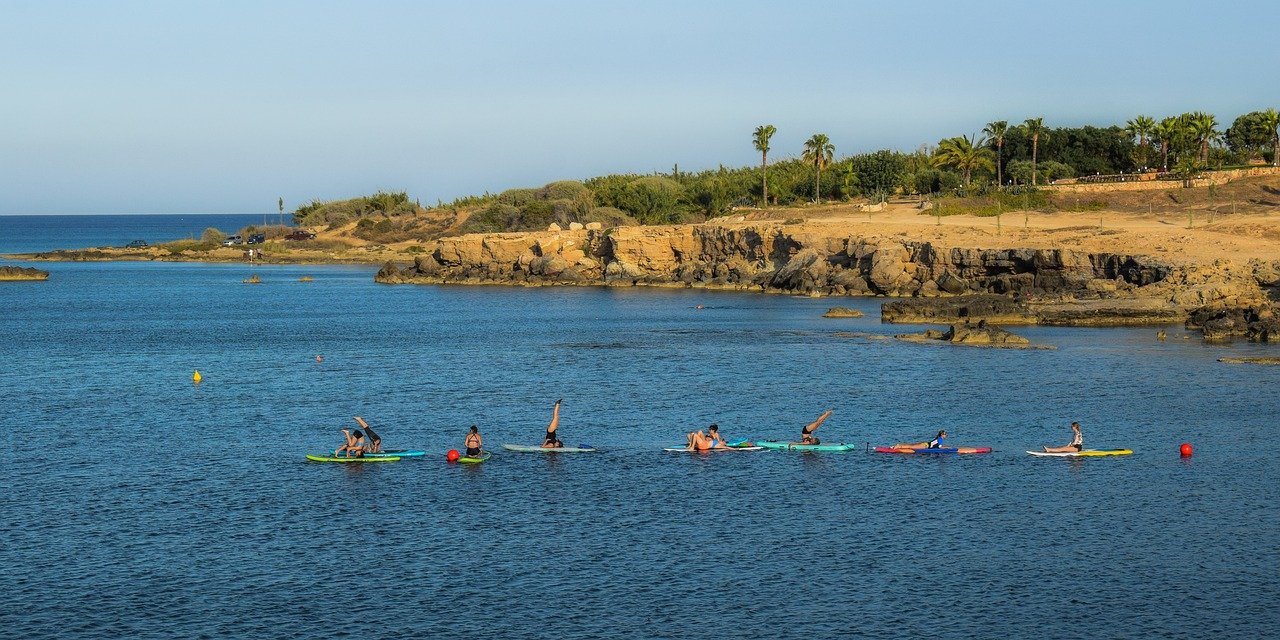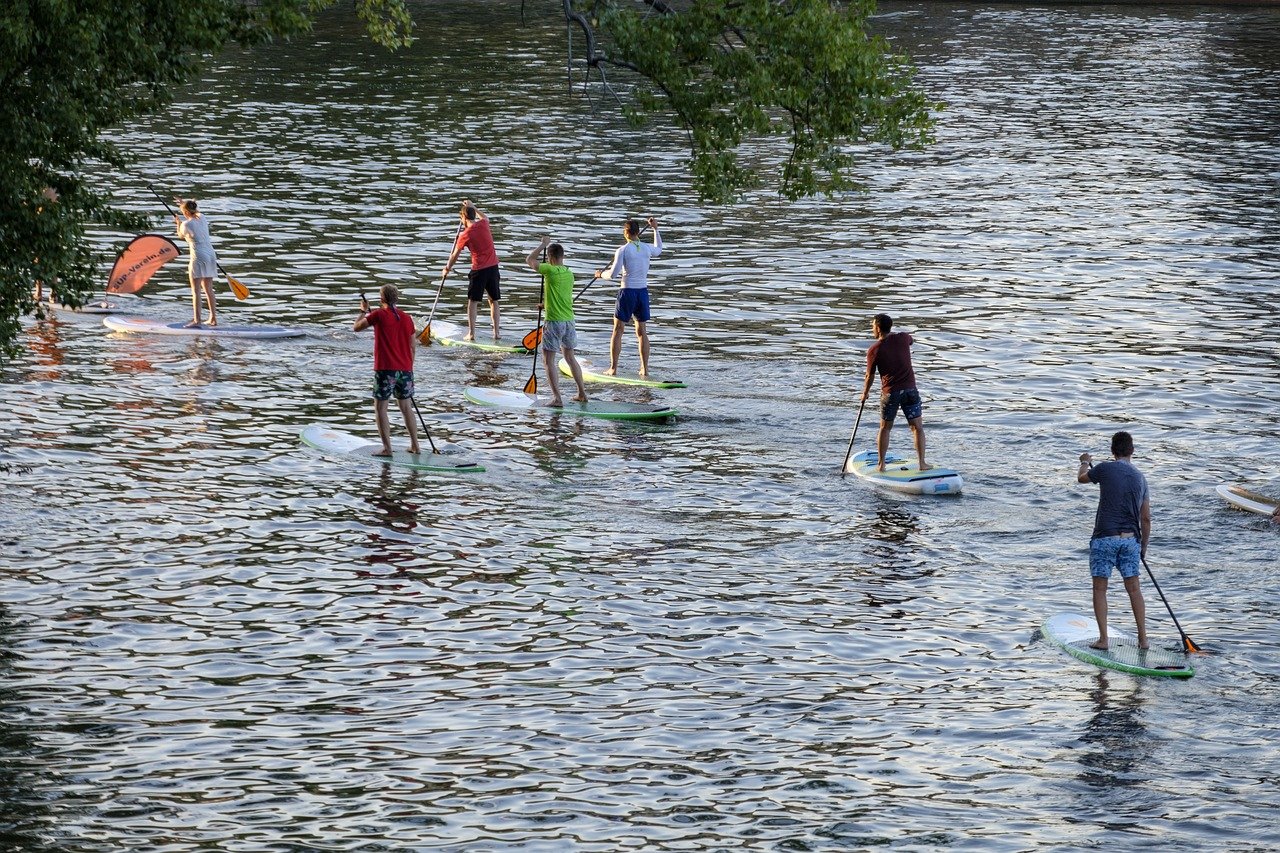Introduction
Fishing from a kayak offers a unique blend of tranquility, adventure, and the thrill of the catch. Whether you’re paddling through serene lakes, winding rivers, or coastal waters, kayak fishing allows you to access spots that are often out of reach for larger boats. This mobility, combined with the intimacy of being so close to the water, creates an immersive fishing experience. However, it also presents unique challenges that require specific kayak fishing tips to overcome. In this comprehensive guide, we’ll explore expert kayak fishing tips and tricks to help you maximize your success on the water, whether you’re a beginner or a seasoned angler
Choosing the Right Kayak for Fishing
Before you hit the water, selecting the right kayak is crucial. The type of kayak you choose will significantly impact your fishing experience.
1. Types of Kayaks: Sit-on-Top vs. Sit-In
- Sit-on-Top Kayaks: These are the most popular choice for fishing due to their stability and ease of access. They allow for easy entry and exit, which is especially useful if you plan on wading or if you happen to tip over. Sit-on-top kayaks also offer ample storage for your gear.
- Sit-In Kayaks: While sit-in kayaks are generally lighter and offer better protection from the elements, they can be more challenging to maneuver in and out of, especially when fishing. However, they are great for colder climates where you might need extra protection from the wind and water.
2. Stability, Storage, and Comfort
- Stability: Stability is perhaps the most important factor when choosing a fishing kayak. A stable kayak will allow you to cast, reel in fish, and even stand up if necessary. Look for kayaks that have a wide hull and a flat bottom, which provide the best stability.
- Storage: Fishing requires a good amount of gear, so ample storage is a must. Sit-on-top kayaks often come with built-in storage compartments and bungee cords to secure your tackle boxes, coolers, and other essentials.
- Comfort: You’ll be spending hours in your kayak, so comfort is key. Look for kayaks with adjustable seats and footrests. Some higher-end models even offer padded seats and lumbar support.
3. Recommended Kayaks
For those new to kayak fishing, the Perception Pescador Pro 12 and the Vibe Sea Ghost 130 are excellent choices. Both offer a great balance of stability, storage, and comfort. For more experienced anglers, the Hobie Mirage Outback with its pedal-drive system is a top-tier option that allows hands-free fishing. Check here the best kayak for fishing.
Essential Gear for Kayak Fishing
Once you’ve chosen your kayak, the next step is to equip yourself with the right gear. Having the appropriate equipment will not only make your fishing trip more successful but also safer.

1. Fishing Rods and Reels
When fishing from a kayak, space is limited, so you’ll want to choose a rod and reel that are versatile and compact.
- Rods: Medium to medium-light rods, around 6 to 7 feet long, are ideal. They offer a good balance of power and sensitivity, allowing you to feel the bite and set the hook effectively.
- Reels: Spinning reels are the go-to choice for kayak fishing. They are easy to use, versatile, and work well in various conditions. Brands like Shimano and Penn offer reliable spinning reels that can handle both fresh and saltwater fishing.
2. Tackle and Lures
Your tackle box should be well-stocked with a variety of lures and baits suited to the species you’re targeting.
- Soft Plastics: Soft plastics like worms, crawfish, and baitfish imitations are versatile and effective for a wide range of fish species.
- Crankbaits and Jigs: These are great for targeting bass and other predatory fish. Crankbaits work well when covering large areas, while jigs are perfect for fishing near structures.
- Topwater Lures: For an exhilarating experience, use topwater lures during the early morning or late evening hours when fish are feeding near the surface.
3. Safety Gear
Safety should always be your top priority when kayak fishing.
- PFD (Personal Flotation Device): A PFD is essential and should be worn at all times. Look for one that is designed specifically for kayaking, with plenty of pockets for storage.
- Whistle and Lights: A whistle can alert others to your presence, while a light (preferably an LED) is essential for early morning or late evening trips.
- First-Aid Kit: Always carry a basic first-aid kit that includes bandages, antiseptic wipes, and any personal medications.
4. Additional Accessories
- Rod Holders: These keep your rods secure and out of the way when paddling. Some kayaks come with built-in rod holders, or you can purchase aftermarket ones that attach to the kayak.
- Fish Finders: A fish finder can be a game-changer, especially in larger bodies of water. It helps you locate fish and understand the underwater terrain.
- Anchors and Drift Socks: These are used to stabilize your kayak in windy conditions or when fishing in a current. An anchor trolley system allows you to adjust the position of your anchor to control the direction your kayak faces.
Kayak Fishing Techniques
With your gear ready, it’s time to focus on the techniques that will help you land that trophy fish. Another blog for fishing tips
1. Casting and Reeling from a Kayak
- Casting: When casting from a kayak, the key is to maintain balance. Sit comfortably and use short, controlled casts. Overhand casting can be challenging, so sidearm or underhand casts are often more effective.
- Reeling: Once you’ve hooked a fish, keep your rod tip up to maintain tension. Reel in steadily, using your kayak’s movement to your advantage. If the fish makes a run, let it tire itself out before reeling it in.
2. Handling Fish on a Kayak
Handling fish on a kayak can be tricky due to the limited space.
- Use a Net: A net with a long handle will help you land fish without losing balance. Look for nets with rubberized mesh, which are gentler on the fish and reduce the chance of your hooks getting tangled.
- Fish Grippers: Fish grippers allow you to securely hold the fish while you remove the hook, reducing the risk of injury to both you and the fish.
3. Using Anchors and Drift Socks
- Anchors: An anchor keeps your kayak in place, allowing you to focus on fishing. Use a small, folding anchor that is easy to deploy and retrieve. Attach it to an anchor trolley system to adjust your position relative to the wind and current.
- Drift Socks: A drift sock slows down your drift, giving you more control when fishing in windy conditions. This is especially useful when fishing over structure or in deeper waters.
4. Navigating Currents and Waves
Kayak fishing often requires navigating through various water conditions.
- Currents: When fishing in rivers or coastal areas with strong currents, position your kayak so that you can cast upstream and let your lure drift naturally with the current. This mimics the natural movement of prey and is more likely to attract fish.
- Waves: In choppy waters, keep your kayak’s bow pointed into the waves to reduce the chance of capsizing. If the waves are too large, it’s best to paddle to shore and wait for conditions to improve.
Best Practices for a Successful Kayak Fishing Trip
Success in kayak fishing often comes down to preparation and knowledge of the local environment.
1. Researching and Choosing Fishing Locations
The location of your kayak fishing trip can make or break your experience. Researching potential fishing spots in advance will increase your chances of success.
- Local Knowledge: Tap into local fishing reports, forums, and social media groups to find out where the fish are biting. Locals often have insider knowledge on the best spots, the right bait, and the best times to fish.
- Exploring Maps: Use maps or Google Earth to scout out locations before your trip. Look for features such as submerged structures, drop-offs, and weed beds, which are likely to hold fish.
- Fishing Apps: Apps like Fishbrain or Navionics can provide valuable information on fishing hotspots, species, and user-generated data on recent catches.
2. Understanding Local Fish Species and Their Behavior
Knowing the behaviour of the fish species you’re targeting is crucial for a successful kayak fishing trip.
- Seasonal Patterns: Fish behavior often changes with the seasons. In warmer months, fish may be more active in shallow waters early in the morning and late in the evening, while during colder months, they may be found in deeper waters.
- Feeding Habits: Understanding what your target species eats will help you choose the right bait or lures. Predatory fish like bass may go after crankbaits or live bait that mimics their natural prey, while bottom feeders like catfish might prefer dough bait or cut bait.
- Activity Levels: Fish are often more active during certain times of the day. Early morning and late evening are typically prime times, but this can vary depending on the species and weather conditions.
3. Preparing for Weather Conditions
Weather can significantly impact your kayak fishing experience, so it’s important to be prepared.
- Checking the Forecast: Always check the weather forecast before heading out. Pay attention to wind speeds, as strong winds can make kayaking difficult and even dangerous.
- Dressing Appropriately: Layer your clothing to adapt to changing weather conditions. Wear moisture-wicking fabrics to stay dry and avoid cotton, which retains water and can make you cold.
- Bringing Weather-Specific Gear: If rain is in the forecast, bring a waterproof jacket and pants. A hat and polarized sunglasses are essential for sunny days, helping you see into the water and spot fish.
4. Time Management: When to Fish
Timing can be everything when it comes to fishing.
- Early Morning and Late Evening: These are often the best times to fish, as many species are most active during these hours.
- Tidal Patterns: If you’re fishing in coastal waters, understanding tidal patterns is crucial. Fish are often more active during incoming or outgoing tides when water movement stirs up food.
- Moon Phases: Some anglers swear by fishing during certain moon phases, particularly during a full or new moon, when fish are said to be more active.
Safety Tips for Kayak Fishing
Safety should always be a top priority when fishing from a kayak, especially when you’re on open water or in unfamiliar territory.
1. Staying Safe in Various Weather Conditions
Weather can change quickly, so it’s essential to be prepared for all conditions.
- Wind: High winds can make it difficult to paddle and control your kayak. If the wind picks up, head for shore and wait until it subsides. Paddling into the wind is safer than letting it push you into a dangerous area.
- Rain: A sudden downpour can reduce visibility and make the water choppy. Always carry a waterproof jacket and be prepared to paddle to shore if conditions worsen.
- Fog: If you encounter fog, stay close to shore and use a compass or GPS to avoid getting lost. Make sure your kayak is equipped with lights to increase visibility to other boaters.
2. What to Do If You Capsize
Capsizing can happen to even the most experienced kayakers. Knowing how to handle it is essential.
- Stay Calm: The first rule is to stay calm. Panic can lead to poor decisions that make the situation worse.
- Re-Entering the Kayak: If you capsize, stay with your kayak. Most sit-on-top kayaks are designed to be easy to re-enter from the water. Flip the kayak back over, position yourself next to it, and kick while pulling yourself onto the deck.
- Using a Paddle Float: A paddle float can help you re-enter your kayak. Attach it to one end of your paddle, and use the other end as a stabilizer while you pull yourself back in.
3. Staying Visible to Other Boats
Visibility is crucial for safety, especially in areas with motorized boats.
- Bright Clothing: Wear bright, high-visibility clothing to make yourself more noticeable on the water.
- Flag and Lights: Attach a high-visibility flag to your kayak and use lights, especially when fishing during low-light conditions. A 360-degree white light is required in many areas when kayaking at night.
- Whistle or Horn: A whistle or horn can alert other boats to your presence if they don’t see you.
4. First-Aid Essentials
A basic first-aid kit is a must for any kayak fishing trip.
- Minor Injuries: Include bandages, antiseptic wipes, and pain relievers for minor cuts and scrapes.
- Allergies and Insect Bites: Pack antihistamines and insect repellent, especially if you’re fishing in areas with a lot of bugs or plants that can cause allergic reactions.
- Emergency Contacts: Have a way to contact emergency services if needed. A waterproof phone case and a VHF radio are good options for staying in touch.
Advanced Tips and Tricks
Once you’ve mastered the basics, these advanced tips can help you take your kayak fishing to the next level.
1. Using Fish Finders Effectively
Fish finders can greatly increase your catch rate by helping you locate fish and understand the underwater environment.
- Interpreting the Display: Learn how to read the fish finder’s display. Fish will often appear as arches or dots, while structures like rocks and weeds will have different shapes and densities.
- Adjusting Settings: Play around with the sensitivity and frequency settings to get the clearest view of what’s beneath you. Higher frequencies give more detail but have less depth penetration, while lower frequencies offer deeper range but less detail.
- Finding Structures: Use the fish finder to locate underwater structures such as drop-offs, weed beds, and submerged trees, where fish are likely to congregate.
2. Night Fishing from a Kayak
Night fishing adds an extra layer of excitement and challenge to your kayak fishing adventures.
- Lighting: Equip your kayak with plenty of lights, including a 360-degree white light for visibility and LED lights for seeing your gear and surroundings.
- Lure Selection: Fish often feed more aggressively at night, so using lures that create noise or vibrations can attract their attention. Topwater lures, crankbaits, and spinnerbaits are good options.
- Safety Precautions: Stay close to shore and avoid areas with heavy boat traffic. Always let someone know your plans before heading out.
3. How to Improve Your Catch Rate
Improving your catch rate often comes down to fine-tuning your techniques and being patient.
- Experiment with Lures: If you’re not having any luck, switch up your lures and try different colors, sizes, and types. Sometimes a slight change can make a big difference.
- Patience and Persistence: Fish are unpredictable, so patience is key. If you’re not getting bites, move to a different location or try a different depth. Don’t be afraid to explore new areas.
- Match the Hatch: Pay attention to what fish are feeding on in your area and try to match your bait or lures to the natural prey.
4. Best Times of Year for Kayak Fishing
Different seasons offer unique opportunities and challenges for kayak fishing.
- Spring: As water temperatures rise, fish become more active and move into shallower waters to spawn. This is an excellent time for kayak fishing.
- Summer: Early morning and late evening are the best times to fish in summer, as fish tend to seek cooler, deeper waters during the heat of the day.
- Fall: Fall is a great time for kayak fishing, as fish are often more aggressive, feeding heavily in preparation for winter.
- Winter: While more challenging, winter kayak fishing can be rewarding. Focus on deeper waters and use slower retrieval techniques to entice sluggish fish.
Conclusion
Kayak fishing offers an unparalleled blend of adventure, challenge, and the joy of catching fish in beautiful, often remote, locations. By choosing the right kayak, equipping yourself with the necessary gear, and mastering key techniques, you can significantly increase your chances of success. Remember, safety should always be your top priority, and being prepared for various conditions will ensure that you have a great experience on the water.
So, whether you’re new to kayak fishing or looking to refine your skills, the tips and tricks shared in this guide will help you make the most of your time on the water. Now it’s time to gear up, head out, and catch that trophy fish!
Call to Action (CTA)
Looking to get started with kayak fishing? Check out our top recommendations for the best kayaks, rods, reels, and accessories on Amazon. Happy fishing!



8 responses to “Expert Best Kayak Fishing Tips | How to Catch More Fish with the Right Gear and Techniques”
There is definately a lot to find out about this subject. I like all the points you made
Pretty! This has been a really wonderful post. Many thanks for providing these details.
naturally like your web site however you need to take a look at the spelling on several of your posts. A number of them are rife with spelling problems and I find it very bothersome to tell the truth on the other hand I will surely come again again.
naturally like your web site however you need to take a look at the spelling on several of your posts. A number of them are rife with spelling problems and I find it very bothersome to tell the truth on the other hand I will surely come again again.
I like the efforts you have put in this, regards for all the great content.
Great information shared.. really enjoyed reading this post thank you author for sharing this post .. appreciated
You’re so awesome! I don’t believe I have read a single thing like that before. So great to find someone with some original thoughts on this topic. Really.. thank you for starting this up. This website is something that is needed on the internet, someone with a little originality!
This was beautiful Admin. Thank you for your reflections.